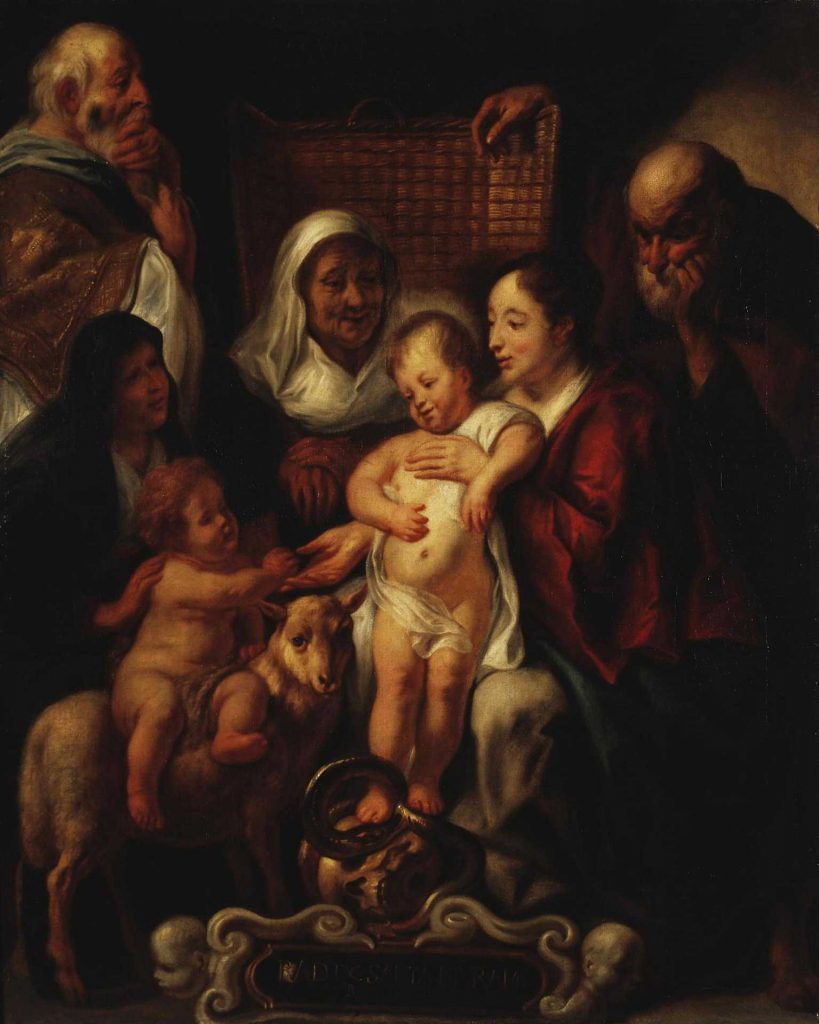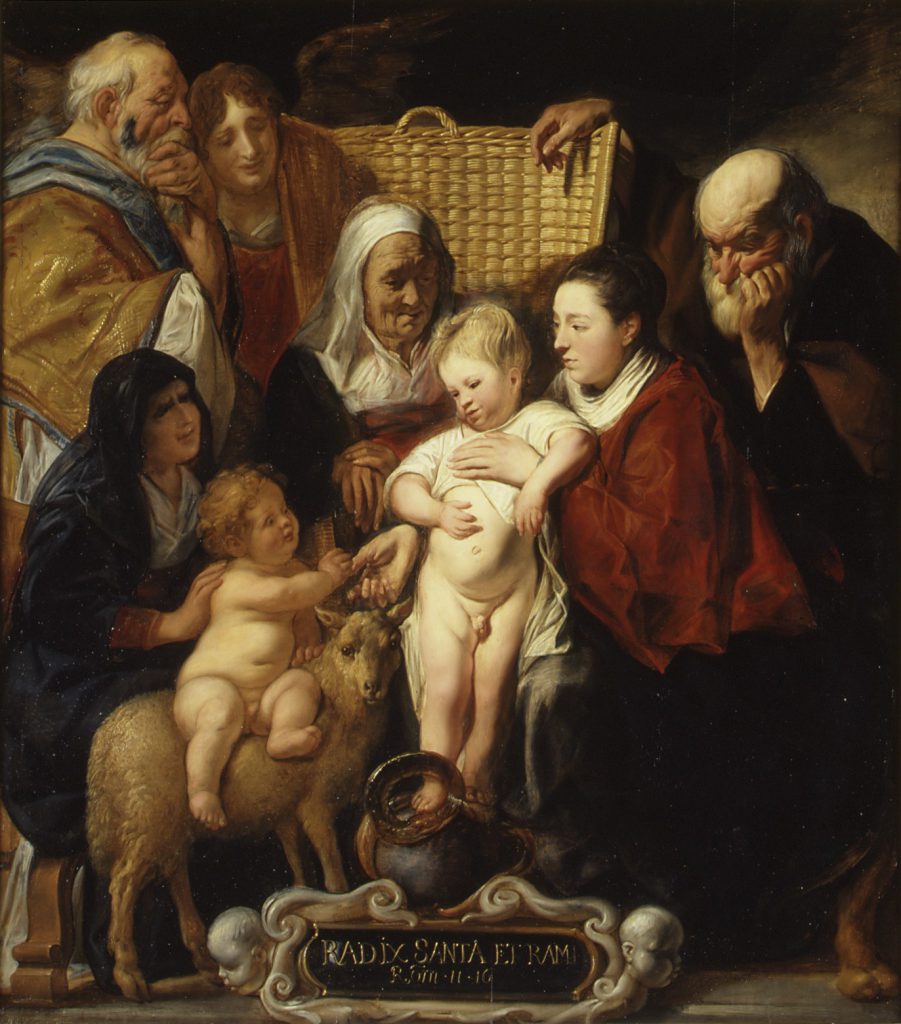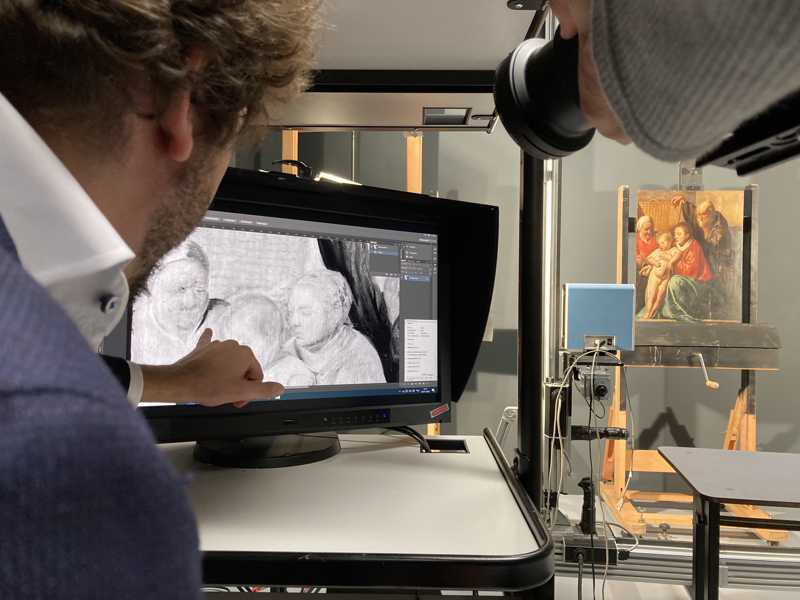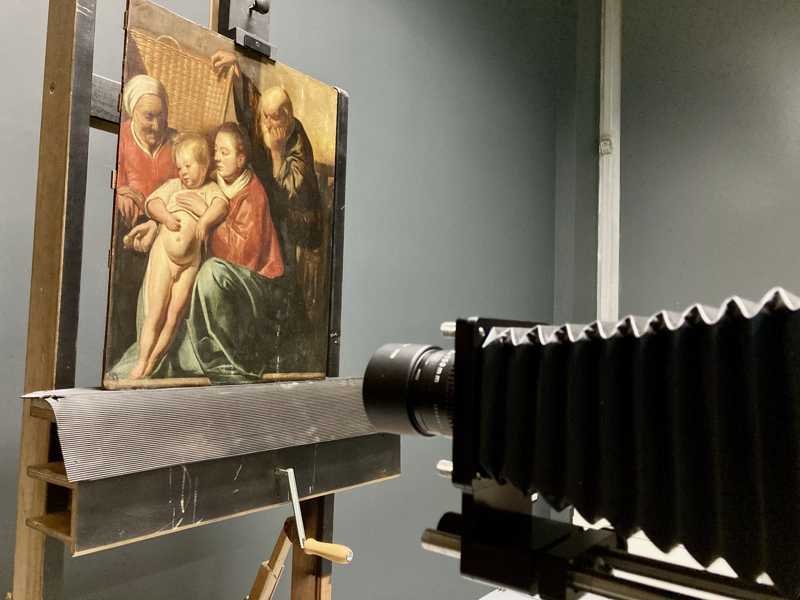10 December 2020
A 400-year-old Flemish masterpiece spent decades hiding in plain sight
Smithsonian Magazine 9 December 2020 (by Isis Davis-Marks)
Officials previously thought that the Jacob Jordaens painting, which hung in a Brussels town hall for 60 years, was a copy.

The Brussels version of Jordaens’ Holy Family, c. 1617–18 (Courtesy of the Royal Museums of Fine Arts of Belgium)
Known for his vivid use of color, virtuosic renderings of the human body and riotous portrayals of peasant life, Jacob Jordaens is widely heralded as an outstanding 17th-century Baroque artist. Now, reports Agence France-Presse (AFP), experts have announced the “incredible discovery” of a Jordaens painting that spent decades hiding in plain sight.
Per a statement, researchers from the Royal Institute for Cultural Heritage (KIK-IRPA) authenticated the artwork, which had hung in Brussels’ Saint-Gilles City Hall for the past 60 or so years, while taking inventory of the Belgian city’s public art collection.
Aided by scholars from the Royal Museum of Fine Arts of Belgium (RMFAB) and the Jordaens Van Dyck Panel Paintings Project, the team used dendrochronology—a dating technique that relies on tree rings to gauge artifacts’ age—to conclude that the painting, previously identified as a copy, is the oldest known version of Jordaens’ seminal The Holy Family (1617–1618). Later iterations of the religious scene are housed at the Metropolitan Museum of Art in New York, the State Hermitage Museum in Saint Petersburg and the Alte Pinakothek in Munich.
“It’s an extraordinary moment of emotion to discover an original work by one of the greatest Baroque painters,” says Constantin Pion, an art historian at KIK-IRPA, in the statement.
Michel Draguet, general director of RMFAB, adds that the painting “is a missing milestone in the artist’s work.”

The Alte Pinakothek version of Jordaens’ Holy Family, c. 1620–25 (Courtesy of the Royal Museums of Fine Arts of Belgium)

The Hermitage version of Jordaens’ Holy Family, c. 1650s–60s (Courtesy of the Royal Museums of Fine Arts of Belgium)

The Metropolitan Museum of Art’s version of Jordaens’ Holy Family, early 1620s and 1650s (Courtesy of the Royal Museums of Fine Arts of Belgium)
In addition to authenticating the painting, the researchers learned that its wood panel came from the same tree used in several of fellow Baroque artist Anthony Van Dyck’s works. The discovery strengthens the theory that the painters were employed in Peter Paul Rubens’ workshop at the same time, according to the statement.
Created when Jordaens was just 25 years old, the newly identified work depicts the holy family with Mary’s mother, Saint Anne. The infant Christ’s relatives gaze at him fondly, their features bathed in warm hues of brown and yellow. Compared with the artist’s subsequent versions of the work, the 1617–18 scene is simpler and, by extension, more intimate. Whereas the Met and Hermitage paintings—created between the early 1620s and ’60s—expand the scene’s cast of characters to include John the Baptist and his parents, the Brussels one is content to convey a simple moment of familial bliss. Its closest foil is the Munich version, which omits Saints Elizabeth and Zacharias but squeezes a young John hugging a lamb into the corner of the composition.
Born in Antwerp in 1593, Jordaens studied art from a young age, working with Adam van Noort—a respected Flemish painter who also taught Rubens—following his admission to the city’s guild of painters in 1615. Jordaens refined his style as he matured, creating realistic and energetic portraits, proverbial scenes and religious works.
As Encyclopedia Britannica notes, Jordaens’ paintings feature dramatic contrasts between light and shadow; pink, fleshy figures reminiscent of Rubens’ cherubs; and crowded compositions. The artist employed apprentices to create copies of his most popular works, including The King Drinks, a bawdy scene depicting a monarch flanked by spirited partygoers.

The painting’s wood panel came from the same tree used in several of fellow Baroque artist Anthony Van Dyck’s works. (Courtesy of the Royal Museums of Fine Arts of Belgium)

Researchers assessed the painting while taking inventory of Brussels’ public art collection. (Courtesy of the Royal Museums of Fine Arts of Belgium)

The painting will go on display in Brussels after a year-long restoration. (Courtesy of the Royal Museums of Fine Arts of Belgium)
Jordaens helped Rubens fulfill commissions for the Spanish royal family between 1636 and 1637, according to the London National Gallery. After Rubens’ death in 1640, Jordaens rose to even greater prominence, painting works for Queen Christina of Sweden, members of the House of Orange and Charles I of England.
Per the statement, the 400-year-old work will now undergo a one-year restoration campaign sponsored by Brussels’ urban development administration. Experts will remove “yellow varnishes and darkened retouches” from the painting’s surface of the painting and treat the panel to “avoid new cracks in the wood or loss of paint.”
The surprising find—and subsequent analyses slated to take place in conjunction with the restoration—may help art historians gain a better understanding of Jordaens’ oeuvre and development as an artist. As Saint-Gilles cultural heritage expert Pierre Dejemeppe tells AFP, The Holy Family provides “something of a matrix of what he would do later. It will give us a better understanding of later versions [of the subject].”
Come late 2021, the restored painting will be exhibited at RMFAB, which houses one of the largest Jordaens collections in the world.
